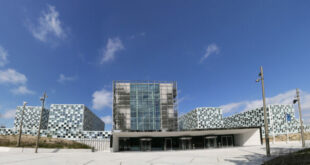
This means hospitals and health facilities are expected to prepare more medicines and supplies in their emergency and operating rooms, especially for trauma patients.
Other needs such as x-ray plates and laboratory requirements will also be made available “without requirement for out of pocket by victims,” the DOH said in a statement.
“Under orders of President Ferdinand Marcos Jr., the DOH and all hospitals and health facilities will be ready for all untoward incidents this Christmas and New Year season,” Health Secretary Ted Herbosa said in a statement.
The DOH also reminded the public to avoid the use of firecrackers and driving after drinking alcohol.
Meanwhile, the Department of the Interior and Local Government (DILG) said pyrotechnic devices that are not firecrackers such as sparklers can still be used at home, as they are not covered by the ban on firecracker use in homes.
Pyrotechnics that were allowed include sparklers, luces, fountains, and Roman candles—even though the DOH identified luces as among the top five causes of fireworks-related injuries this year.
Firecrackers that explode should only be used in community fireworks displays as stated in Executive Order No. 28, which was implemented in 2017 under former President Rodrigo Duterte.
“Since 2017, over 1,210 LGUs (local government units) have issued ordinances to implement this,” said DILG Undersecretary Lord Villanueva.
Penalties will depend on the LGU’s specific ordinance.
“Under an ordinance, a city has the power to impose a criminal penalty and usually this is a few months imprisonment or a fine,” Villanueva said.
LGUs may also opt to implement a complete ban on the use of fireworks.
“That’s within the power of the local government if they want to be strict,” Villanueva added.
Also on Friday, a congressional leader urged the DOH and LGUs to ramp up their efforts to make sure there are no firecracker-related casualties ahead of the New Year’s Eve celebrations.
“We call on the DOH and our LGUs to further intensify preparations to ensure that our New Year celebration is safe,” Anakalusugan Party-list Rep. Ray T. Reyes said.
Reyes, vice chair of the House committee on health, added that the police and local executives should strictly implement Republic Act 7183 and Executive Order 28, s. 2017 to regulate and control the use of firecrackers and other pyrotechnic devices.
Reyes also urged Filipinos to use alternative ways to make noise instead of firecrackers in welcoming 2024.
The DOH on Friday warned the public against hearing loss due to fireworks as it reported the first case of hearing impairment.
Latest data from the DOH’s fireworks-related injuries report showed that the case is a 23-year-old woman from Central Luzon who lost her hearing after passive exposure to “kwitis” or skyrocket.
However, no statistics were provided about cases of hearing damage from the 2023 New Year revelry.
“Fireworks can lead to hearing loss. Firework explosions result in sound levels of 140-150 decibels (dB), which can lead to pain and ear injury after exposure,” the DOH advisory said.
“For comparison, the sound of a normal conversation is around 60 dB; the sound of a motorcycle is 95 dB; sirens are at 120 dB. Loud noises above 120 dB can cause immediate harm to ears,” the advisory said.
“Watching community fireworks displays from a safe distance is still the best. If you cannot avoid exposure to fireworks and their loud sounds, use hearing protection like earplugs or earmuffs,” it added.
The total number of fireworks-related injuries from Dec. 21 to 29 has reached 96.
As of 6 a.m. Friday, the DOH logged eight new cases of fireworks-related injuries, with victims ranging in age from 5 to 49 years old. About 88 percent of these were males.
Six of the new cases were due to illegal fireworks, while more had active involvement or used or lit the fireworks themselves. They include the first case of hearing loss due to fireworks this year.
No additional reports of amputation or ingestion have been reported so far.
Three out of every 10 cases come from the National Capital Region (NCR) with 33 cases or 34 percent of the overall tally.
Next to NCR is Central Luzon with 12 cases or 12 percent; Ilocos Region with 12 or 12 percent; Soccsksargen with six or 6 percent; Bicol Region with five or 5 percent; and Western Visayas with five or 5 percent.
Ninety-six percent happened at home and in the streets, mostly by males with active involvement.
The top identified fireworks that cause at least seven out of every 10 injuries were boga, 5-star, kwitis, piccolo, pla-pla, whistle bomb, and luces.
Advocates for health and environmental protection urged Filipino families to usher in the New Year with cleaner air by not lighting firecrackers and fireworks.
Dr. Maricar Limpin, a pulmonologist at the Philippine Heart Center, and Aileen Lucero, an environmentalist from the EcoWaste Coalition, pushed for a non-hazardous and non-polluting welcome to 2024 to minimize injuries and the releases of harmful chemicals into the atmosphere.
“Lighting firecrackers and fireworks — legal or illegal ones — generates environmental pollutants that can aggravate the air quality, which can have life-threatening effects on the most vulnerable groups, especially the children, senior citizens, and people with cardiovascular, neurological, respiratory and other medical conditions. Breathing in these microscopic pollutants may result in coughing, wheezing, and shortness of breath, as well as asthma and heart attacks,” said Limpin who is also the past president of the Philippine College of Physicians and the Philippine College of Chest Physicians.
Among the environmental pollutants generated by the exploding firecrackers and fireworks are suspended particulate matter (SPM), greenhouse gases carbon dioxide, carbon monoxide, and nitrogen oxide, and chemicals associated with the manufacture of firecrackers and fireworks like aluminum, barium, copper, lead, potassium, and strontium.
Limpin said inhaling PM 2.5 (or particles that are 2.5 microns or less in diameter) can be very harmful as these fine particles can travel deep into the respiratory tract and the lungs. A study by the Manila Observatory showed PM 2.5 reached “very unhealthy” levels as a result of fireworks during the 2019 New Year revelry. — Vince Lopez & Maricel Cruz
*****
Credit belongs to: www.manilastandard.net
 Atin Ito First Filipino Community Newspaper in Ontario
Atin Ito First Filipino Community Newspaper in Ontario






